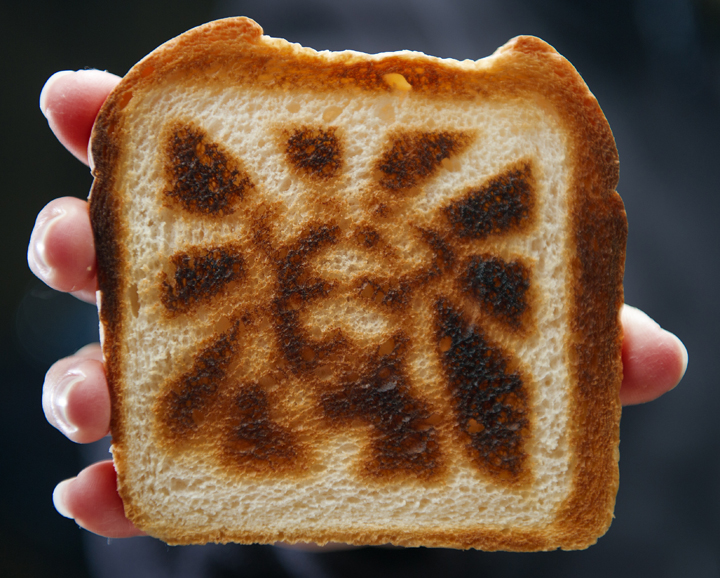TORONTO – Spotted: Jesus staring back at you on your morning toast, the Virgin Mary praying on your sandwich and the face of Elvis Presley on your potato chip during snack time.

If you think you’re going crazy, Canadian scientists are offering you some reassurance. They say seeing “Jesus in toast” and other images is a normal thing – it’s just that our brains are hard-wired to look for faces we recognize in everyday objects. That includes pancakes, perogies and … pretzels.
“Most people think you have to be mentally abnormal to see these types of images, so individuals reporting this phenomenon are often ridiculed,” according to lead researcher Dr. Kang Lee of the University of Toronto.
“But our findings suggest that it’s common for people to see non-existent features because human brains are uniquely wired to recognize faces so that even when there’s only a slight suggestion of facial features, the brain automatically interprets it as a face,” Lee said.
The neuroscientist studies how people – from babies to adults – process faces. At first, he was skeptical when he kept hearing about this phenomenon but post-research, he thinks it’s more common than most people realize.
In a series of studies, Lee considered how the human brain can be influenced to see something that might not be there. He’d show study participants “noisy” images purposely constructed so there was nothing in them. But if he told the subjects that half of the photos had faces in them, 35 per cent of the time, people would suddenly find faces.
In other cases, 35 per cent of the group even recognized letters when Lee told them the noisy photos contained them.
“It’s very robust. It’s a very common phenomenon, and not a one-off situation for a certain group of people. You can induce this response in most people,” Lee told Global News.
Simply put, instead of “seeing is believing,” some of us have a tendency to live by a “believe what we see” motto.
(A whole Twitter account is dedicated to seeing faces in things.)
Then he looked at brain scans as the study participants processed what they were looking at. Lee and his team are convinced that it isn’t a brain anomaly or a wild imagination that makes people spot faces, it’s just the work of the frontal cortex – the part of the brain that helps to generate expectations and signals to better interpret the outside world.
Because recognizing and reading faces is such an integral part of our life, it’s almost second nature to try to find them in our daily activities.
“Faces are so important in our everyday lives. We are such social animals, we need to have this ability to find the face, and relate to it,” he said.
Lee said that his next steps are to study babies and chimps to see if they relate their interpretation of the world to what they see in front of them.
The study is the first of its kind, the authors say. It was published Tuesday in the journal Cortex. Read the full study here.
carmen.chai@globalnews.ca
Follow @Carmen_Chai


Comments